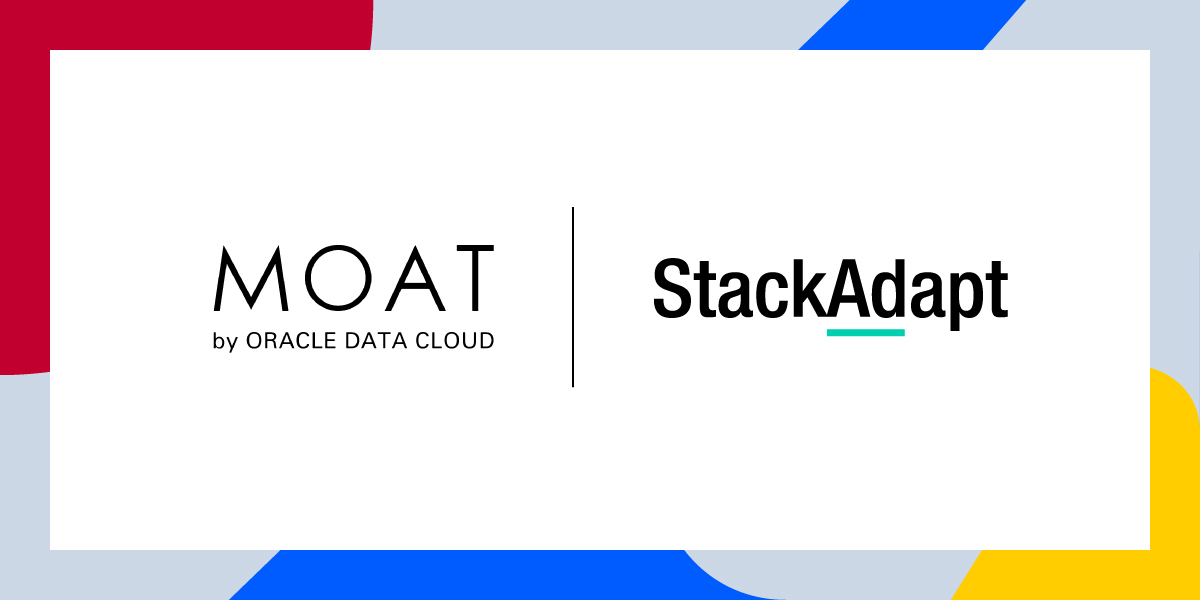The retail industry is always evolving thanks to changing consumer trends and advancements in technology. For example, back in 2013, online sales of consumer packaged goods (CPG) products only accounted for 1% of total online sales revenue. By 2025, it’s estimated that number will grow to 20%.
Today’s retail brands have the challenge of reaching consumers in brick and mortar stores, as well as online. As a retail marketer, you need to connect the digital world with offline behaviours, to prove sales lift from digital advertising. One way to do this is with programmatic advertising.
Programmatic advertising is a form of media buying that enables media buyers to purchase advertising space using a programmatic platform that leverages data insights and algorithms to reach the right users.
It’s a process for buying advertising space that is automatic, rather than the traditional process that is typically manual. This automatic process serves ads at the right time, and at the right price.
8 Essential Programmatic Tips For Retail Advertising
Here are 8 tips that will help you build impactful programmatic advertising campaigns for retail, and measure their impact–both online and offline.
1. Leverage the Latest Trends For Retail Advertising
A great starting point for planning retail campaigns is by looking at the latest trends in the industry. For the best insights, you’ll want to look at data from the current year or the year prior.
We’ve rounded up some of 2023’s retail shopping trends and stats to get you started.
- Statista projects that global retail sales will reach around 32.8 trillion USD by 2026, up from approximately 26.4 trillion USD in 2021.
- According to research by the National Retail Federation (NRF), retail store counts are growing with the industry and the broader economy, despite the increasing importance of e-commerce. Retailers are leveraging storefronts to support buying across all channels.
- According to the NRF, consumers are prioritizing value as a way to manage inflation, and they are researching products through various touch points before making a purchase.
2. Build a Profile Around Your Target Retail Audience
Retail shoppers can span across various demographics, so understanding who they are in detail will benefit your campaigns.
Customer profiles describe everything you need to know about a specified group of customers. You can leverage that information to create a digital strategy that aligns with the wants and needs of your audience.
A customer profile will help you make informed decisions about campaign messaging, ad creative, the advertising channels to leverage, and targeting tactics to use.
Here are 5 key steps to building customer profiles for retail advertising:
- Identify your broad audience. Focus on the problem your product, service, or business aims to solve and who needs that problem solved.
- Narrow down that audience. This isn’t always straightforward, but it doesn’t have to be complicated. For example, if you’re a retailer selling baby formula, you’re likely targeting parents, caretakers, and parents-to-be.
- Consider what makes your offering unique. Think about your audience demographic, and what problem you’re positioned to solve for them. The goal is to match your unique offering to the specific motivations of your potential buyers.
- Consider your customers’ journey. Understanding how a customer goes from awareness and consideration to conversion and evaluation enables you to narrow your audience further. Knowing every touch point that a customer passes through before making a purchase will help inform what channels and ad formats you should leverage for the best results.
- Create a profile description. You now have a narrowed idea of your audience and their customer journey, so it’s time to consider their demographics and psychographics in detail. Start with demographics such as age, income level, family size, occupation, education level, and marital status. Then, layer on psychographics like their worldviews and cultural beliefs so you can market to them in a way that is more meaningful.
3. Consider a Seasonal Marketing Strategy
Seasonal marketing is any marketing that revolves around national holidays, cultural holidays, and events. These seasonal moments create a perfect opportunity for retail advertisers to tap into heightened excitement.
There are several key events throughout the year that are relevant to retailers across a number of industries. It’s up to you to decide which events align with the digital marketing goals you have for a brand, product, or service.
Here are seasonal marketing events in North America that you’ll want to take note of:
- Super Bowl
- Mother’s Day and Father’s Day
- Valentine’s Day
- Back to School
- Holiday Season Events (including Black Friday and Cyber Monday)
These occasions have meaning and bring people together. Tapping into the emotional aspects of them can help you inspire your target audience. These events involve consumer purchasing, and so it’s an opportunity to personalize your marketing and reach receptive consumers. For example, holiday marketing will reach an audience that is likely ready to purchase gifts for family and friends.
Not every seasonal marketing event is a good fit for every brand. For example, the back to school season should be a priority for brands that sell clothing, accessories, and school supplies because these are typically the leading retail categories for back to school shoppers.
4. Use a Multi-Channel Strategy to Reach Your Target Audience
In today’s retail advertising landscape, it’s important to leverage multiple tactics to maximize brand awareness. Since consumers use a variety of devices and channels, it’s important to approach your targeting strategy holistically.
Using a multi-channel strategy enables you to reach consumers across different channels. This approach helps you to mimic the customer journey, which doesn’t usually stay confined to one channel.
A multi-channel approach to retail advertising also creates more visibility for a brand. The more presence you have on various channels, the more visible your retail products will be. That presence also means more opportunities for engagement with your content and ads.
5. Use Emerging Programmatic Channels for Your Retail Ads
Ahead of a busy retail season, review the channels you typically leverage for your campaigns, and see if there are opportunities to introduce new ones, or identify if there are channels you haven’t adopted yet. Experiment with leveraging emerging programmatic channels that will help set your retail campaigns apart, like connected TV (CTV), audio, in-game, and digital out-of-home (DOOH).
Connected TV (CTV)
CTV is the perfect addition to your retail advertising strategy because it provides access to the open internet, enhanced targeting, and inventory selection. Retail marketers should add CTV to their media mix as a solution for delivering ads to generally hard to reach, and highly-specific audiences.
CTV ads are video ads that are delivered on CTV channels while audiences are watching streamed content on a CTV device. This means the viewer has made the active choice to watch the programming, and in most cases they don’t have the option to fast forward or skip the ads. This allows retailers to reach viewers in moments where they are highly engaged, through a medium that leverages storytelling.
Programmatic Audio
Digital audio captures the listener’s full attention. Listeners feel intimately connected to the content they are hearing, which allows for a better connection between a listener and a brand. When a programmatic audio ad comes on, a listener is more receptive, which creates the opportunity to drive engagement. Because of programmatic audio’s engaging nature, it’s the perfect channel for discovery.
Listeners are receptive to hearing about products or services that they haven’t encountered or purchased before. And, the personal nature of audio also results in ads having a lasting and memorable effect, which means a higher rate of ad recall.
In-Game Advertising
In-game advertising enables ads to appear in mobile, computer, and video games. With in-game advertising, marketers have an opportunity to tap into this expansive and growing audience. Because in-game is an emerging programmatic channel, advertisers have the unique opportunity to experiment with new strategies to reach engaged audiences.
Digital Out-of-Home (DOOH)
DOOH ads are any digital ads that are found outside the home, and in a public environment. The classic example of a DOOH ad is an ad run on a billboard in Times Square. But the reality is, you can run DOOH campaigns on a variety of formats and sizes, and in various public environments.
DOOH can be leveraged to cast a wide net that reaches a broad audience, which is ideal for brand awareness. Or, narrow down the audience with targeting tactics like geotargeting and geofencing, to maximize your chance of a conversion.
6. Leverage a Retargeting Strategy
Retargeting enables you to deliver online ads to your audience based on their previous intent-based actions on the web. It’s an effective way to re-engage consumers who have seen one of your ads before, or shown interest in your brand or products. Retargeting will help move them down the funnel toward a conversion.
In retail advertising, it’s important that your message is seen multiple times. It’s also key to ensure that the messaging is tailored according to where a consumer is seeing it, and where in the funnel they are.
Having more eyeballs on a retail campaign isn’t always better. The real goal is to make sure you reach the right audience, at the right moment, and with the right messaging. Retargeting will help you do that!
7. Measure Offline Impact With Footfall Attribution
Footfall attribution, also known as foot traffic attribution, is the method used to relate campaign impressions or conversions to actual store visits. It helps you understand how your retail ads are contributing to the foot traffic at brick and mortar locations. This measurement tactic can help you gather data to determine the offline impact of your ads.
Through footfall attribution, you’re able to understand how your campaigns are performing against your target audience. This is done by evaluating how effective your campaign was in driving store visits and revenue lift across all platforms and channels, including offline channels.
With shopping behaviours and habits evolving, the main benefit of footfall attribution is that it will help you keep a pulse on current shopping trends. It also provides you with meaningful insights to inform optimizations to your retail marketing strategy for offline results.
8. Measure Retail Advertising Impact With Brand Lift Study
A brand lift study measures the impact of your campaigns across all your programmatic channels. It typically will provide a picture of the consumer sentiment and brand affinity of people who have been exposed to your media. You can leverage data-driven insights from a brand lift study that will help them to better align brand messaging and strategy.
Brand lift studies go beyond traditional metrics, like impressions. It helps you measure a campaign’s impact on consumer perceptions and behaviour. Let’s say a cosmetics brand has just launched its first campaign around a new line of vegan makeup that wasn’t offered before.
The retailer can run a brand lift study to understand whether their target audience is interested in vegan products. The study can uncover how likely a consumer is to purchase vegan cosmetics, the perception a consumer has about the brand after seeing an ad for the cosmetics, or what brand comes to mind when a consumer thinks about vegan cosmetics.
Get Started With Retail Advertising
With these retail marketing tips, you can leverage programmatic advertising to create campaigns that reach consumers online, driving not just online sales, but in-store purchases, too.
Want to run exceptional retail advertising campaigns? Request a demo to learn more about StackAdapt.





